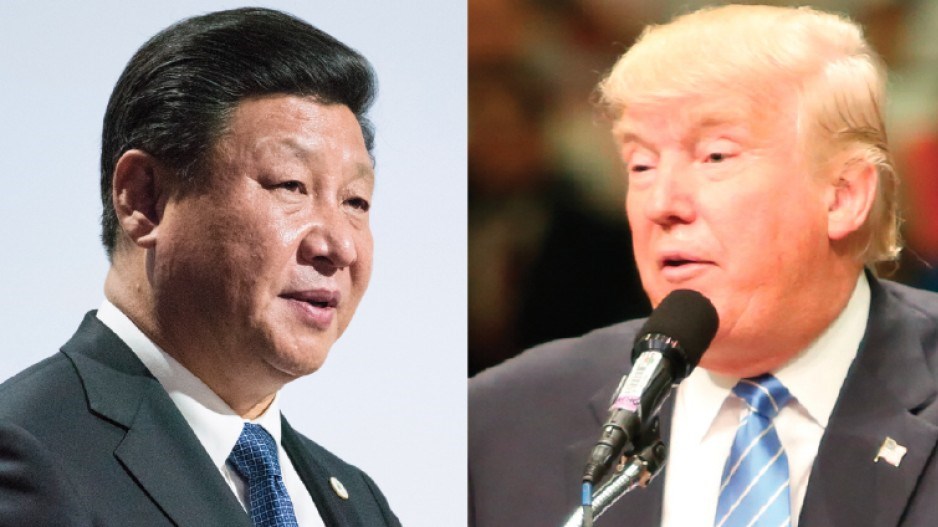Washington and Beijing have struck Phase 1 of a trade deal that experts say could either help or harm Canadian and B.C. exports in 2020 - depending on the details of the deal.
U.S. President Donald Trump signed the initial trade deal with China Wednesday morning, an 86-page document that took about two years of on-again, off-again wrangling to complete. Many of the deal's details have yet to be released, but it is known that China will buy an additional US$12.5 billion worth of American agricultural products in Year 1 of the deal. Those commitments would be increased by another US$19.5 billion in Year 2.
Overall, Phase 1 consists of a Chinese commitment package of US$200 billion to buy America products (including the aforementioned agricultural goods, as well as in sectors such as energy products and services). The deal will take effect in 30 days from Wednesday’s signing.
Canadian and B.C. observers have long held the view that the U.S.-China trade dispute - which some fear may lead to a decoupling of the world’s two largest markets and chaos on the global free-trade system - is potentially beneficial because it keeps the current flow of trade open and stems the tide somewhat against rising protectionism around the world.
But local experts also note that, depending on what China has committed to buy from American agricultural producers, the deal may also shift Chinese demands of Canadian farm products like meat and grains to U.S. suppliers. Currently, the only commodity that Washington has mentioned as being affected by the deal is soybeans export, something that is already dominated by U.S. producers. (According to the Observatory of Economic Complexity, American soybean exports accounted for 38% of the global share at US$22 billion in 2017, while Canada - at US$1.9 billion - accounts for only 3.3%.)
Carlo Dade, director of the Trade & Investment Centre at the Canada West Foundation, noted that there has also been no update on the US$28 billion bailout that Washington has spent to support its soybean producers, adding that - if the deal with China doesn’t include some products and therefore requires subsidies to survive the trade war - that would also hurt Canadian exports.
“If U.S. farmers are subsidized - just like soybeans may be subsidized - it will lower the price of American products in the global markets [even outside China], undercutting us around the world.”
Dade added that Trump may also have more political support from American farmers to take a tougher stance on China based on geopolitical factors, something that isn’t present among Canadian agricultural producers.
He also noted that, as long as another U.S.-China tilt - this one over the extradition of Huawei Technologies Co. Ltd. CFO Meng Wanzhou - is ongoing, Canadian agricultural products could continue to be in danger in the Chinese market. China already effectively banned Canadian imports of canola and red meat last year over the Meng case.
“There are other Canadian crops with greater dependence on China than canola,” Dade said. “China is ‘laying traps’ to import from other sources.… They haven’t done the worst they can do to us yet.”
Yves Tiberghien, political science professor at UBC and director emeritus of the school’s Institute of Asian Research, added that the risk of a China-U.S. decoupling remains real despite the Phase 1 deal - partially because the volatility comes not only from Beijing, but also from Washington, a traditional ally of the liberal international order but taking a hard protectionist turn under Trump.
“If there is a decoupling, does it mean Canada can keep riding the American tiger, or can we maintain some semblance of trade relations with Asia and its supply chain?” Tiberghien said. “That’s the big fundamental question for Canada for 2020 - and maybe into 2021… (Ottawa’s) foreign-policy mandate letter has a lot of emphasis on trying to save the global order from the current crisis, which is led by the U.S. That’s a problem, because if it’s just China, it’s solvable. But if it’s the U.S., then it’s very, very hard to change the dynamics.”




